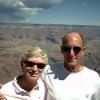the dreaded base to final turn
-
Members Online
- Fly Boomer
- 1st mooney
- Paul Thomas
- MikeOH
- hazek
- M20S Driver
- Ragsf15e
- Florian Guthardt
- ta2too
- jamesm
- ResumeNormalSpeed83
- LANCECASPER
- Schinderhannes
- Adam_StPete
- Bonanza flyer
- colinzp
- phrogpilot73
- Utah20Gflyer
- MarkD34M
- PeteMc
- Mac80
- FlyingDude
- DonMuncy
- Deb
- ed
- AndreiC
- TheAv8r
- Schllc
- TGreen
- Ethan
- wombat
- Ryan ORL
- TCC
- Hank
- ericrynehess
- Grant_Waite
- eman1200
- Fix
- DC2


Recommended Posts
Join the conversation
You can post now and register later. If you have an account, sign in now to post with your account.